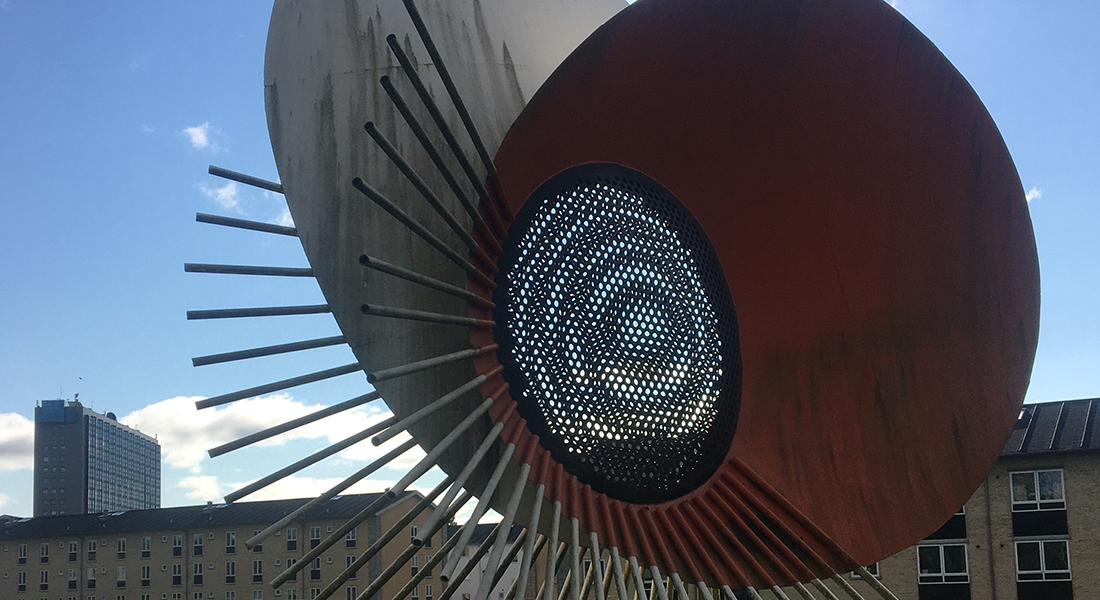Exhibiting Across the Iron Curtain
The forgotten trail of Danish artists exhibiting in the context of state socialism, ca. 1955-1985
A new research project searching the traces of Danish artists on the other side of the Iron Curtain and highlighting exhibitions as zones of contact in the divided Europe.

The project will perform the first-ever investigation of the active involvement of Danish artists in the art world of socialism during the Cold War. Through a survey of exhibitions in art and design based on transfers between Denmark and state socialist countries, ca. 1955-1985, the project seeks to answer the question: How did numerous Danish artists actively exhibit across the Iron Curtain?
This will lead to a new understanding of the centrality of the exhibition as an international meeting point and the configuration of Danish art in a time of new international orientations, setting up a new perspective on the formation of the global contemporary art world.
This is not a story of dreary socialist realism by party-loyal communists or art as a propaganda weapon dictated by the central committee. Instead, the project’s mapping and analysis will cover a range of artistic styles and underlying motivations. This will include a cast of well-known Danish artists such as Svend Engelund, Henry Heerup, Asger Jorn and Svend Wiig-Hansen. We will see the most ambitious art festival of the GDR in Rostock with intensive Danish participation (Biennale der Ostseeländer, Rostock 1965-), the global forum of Graficni Bienale in Ljubljana (1955-), and how a cast of Polish sculptors visited Aalborg in 1967. Often, participants and organizers are still alive and will be able to contribute with valuable information, supported by archival studies.
After critical research has revealed the American influence on artistic practice and Cold War positions from the Western perspective, we will try to investigate motivations and movements for presenting art in the communist countries. Central here is an understanding of the exhibition itself as a zone of transit and contact – often working in official as well as unofficial ways.
The project is located at Department of Art History, The University of Copenhagen, and is coordinated by Kristian Handberg (PI), who will research art exhibitions through a survey of cases from Denmark, GDR, Poland and Yugoslavia, informed by recent research in Exhibition Histories and global modernism.
Postdoc Yulia Karpova (Russian design historian and PhD from Central European University) will focus on design exhibitions between Denmark and the Soviet Union, cultural diplomacy through exhibitions, and contribute with insights into the Russian context.
Danish artists in the Soviet Union and Tintin, interview with Kristian Handberg in 'Frederiks Værk' at 24syv (in Danish)
New research sheds light on Dea Trier Mørch, interview with Kristian Handberg in Politiken 11 February 2024 (in Danish)
Rostock: The forgotten art sanctuary during the Cold War, interview with Kristian Handberg 13 February 2024 (in Danish)
Exhibiting in a European Periphery? International Art in Sweden During the Cold War (Södertörn University Stockholm).
Handberg, Kristian. "Exhibiting Cobra across the Iron Curtain: Exhibition Diplomacy and Modernism as Ostpolitik across Borders in Northern Europe during the Cold War." Artl@s Bulletin 11, no. 2 (2022): Article 6.
Karpova, Yulia. "The Afterlife of Danish Modern: Design Exhibition in Moscow, 1969–70." Artl@s Bulletin 11, no. 2 (2022): Article 7.
Handberg, Kristian and Yulia Karpova. "Exhibiting Across the Iron Curtain: The Forgotten Trail of Danish Artists Exhibiting in the Context of State Socialism, ca. 1955–1985." Artl@s Bulletin 11, no. 2 (2022): Article 11.
Handberg, Kristian. ”New approaches to art and life in the Polish People’s Republic: Henryk Stażewski at Muzeum Sztuki”, ARTMargins. (August 2023).
Researchers
| Name | Title | Phone | |
|---|---|---|---|
| Handberg, Kristian | Assistant Professor | +4535334869 |
Funding

Novo Nordisk Investigator Grant in Art History 2020
Project period: 2021-2024
PI: Kristian Handberg
